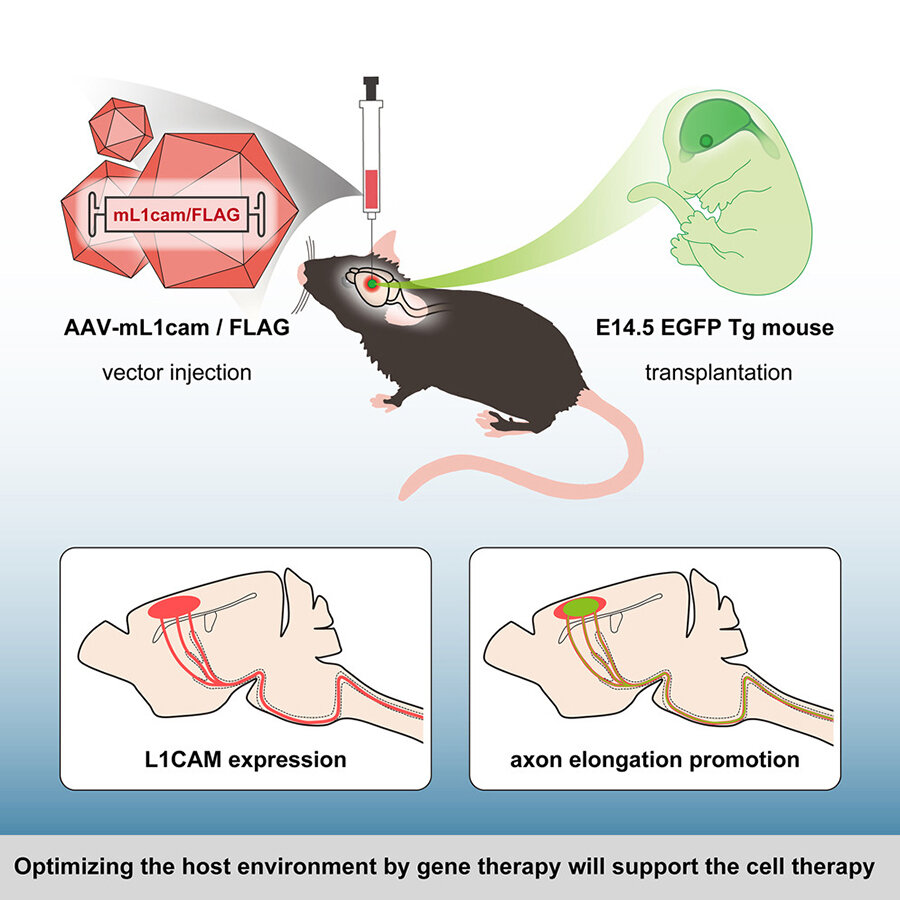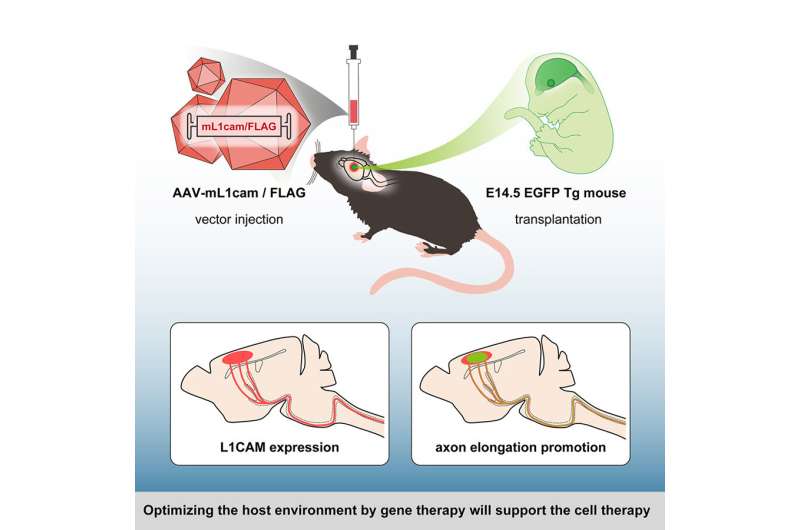

A study published in the journal Stem Cell Reports on March 23, led by Dr. Ryosuke Tsuchimochi and Professor Jun Takahashi, examined the effects of combining cell transplantation and gene therapy for axonal outgrowth in the central nervous system. The authors demonstrated the potential of this combinatorial therapy for promoting axonal regeneration in patients with central nervous system injuries.
Stroke and traumatic brain/spinal cord injuries often damage the corticospinal tract (CST), composed of descending axonal tracts from the motor cortex down the spinal cord, that innervates motor neurons to activate skeletal muscles for controlling voluntary movements. Pharmacological and surgical interventions, in conjunction with rehabilitation, can maintain some lost motor functions, but patients with such acute neural injuries often suffer from lifelong severe motor impairment.
Cell replacement therapy—the implantation of new neurons into damaged brain regions—is viewed as a last hope that could help patients recover sufficient motor functions to live a normal life. The research team previously demonstrated that brain tissues transplanted into injured mouse brains could find their way to the CST and spinal cord but believed that further optimization of the host environment was necessary to promote CST reconstruction and functional recovery.
The researchers decided to test the combination of cell transplantation and gene therapy to optimize the host environment in the central nervous system to enhance axonal extension and promote outgrowth by the transplanted brain cells. Specifically, the researchers used an adeno-associated virus (AAV) to deliver a transgene encoding L1CAM, one of four axon guidance molecules tested in the study, into the host mouse motor cortex before the implanting of embryonic brain tissue.
Among the axon guidance molecules tested, L1CAM was the most effective at promoting axonal extensions by the implanted embryonic cerebral grafts. Indeed, axons from the donor tissue were observed to reach the cervical spinal cord in animals with L1CAM transgene expression, as early as one week following cell transplantation and continued to survive up to three months at the time of analysis.
The study highlights the potential of combinatorial therapy for promoting axonal regeneration in patients with central nervous system injuries. Further research is needed to explore the safety and efficacy of this approach in clinical settings.
More information:
Ryosuke Tsuchimochi et al, Viral delivery of L1CAM promotes axonal extensions by embryonic cerebral grafts in mouse brain, Stem Cell Reports (2023). DOI: 10.1016/j.stemcr.2023.02.012
Journal information:
Stem Cell Reports
Source: Read Full Article